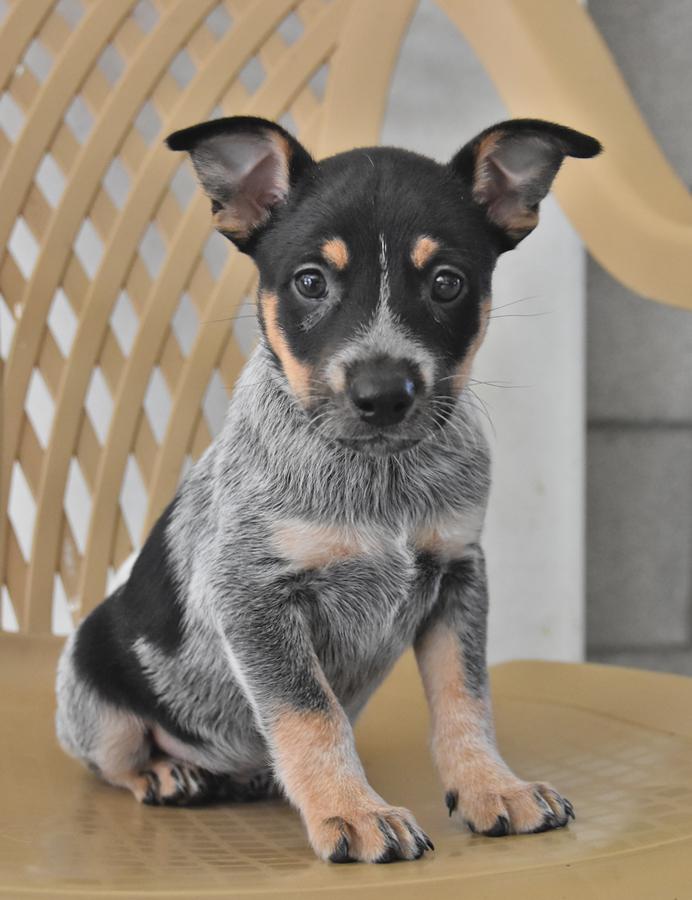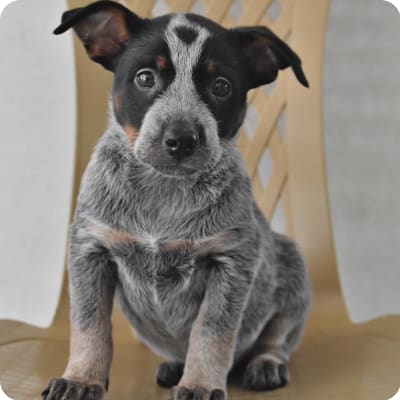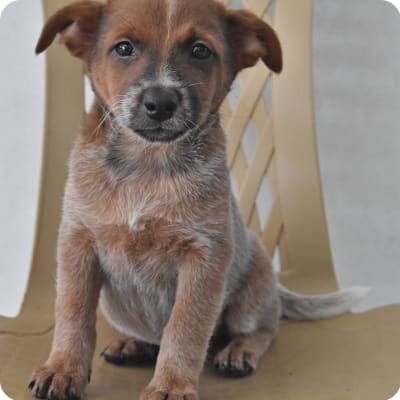Australian Cattle Dog Puppies

The Brave, Loyal, and Energetic Australian Cattle Dog Quick Facts
This muscular and athletic crossbreed is directly related to the Australian wild dog, the Dingo. They are very alert and intelligent, and have a reputation for outsmarting their owners. They love to work, and are excellent hunters, love chasing things, and of course, herding. They are very loyal, but can be wary of strangers.
Australian Cattle Dog At a Glance




Australian Cattle Dog At a Glance
- Size: 17"-20", 35-50 lbs.
- Lifespan: 12-16 years
- Energy Level: high
- Coat: Smooth and thick
- Shedding: moderate
- Hypoallergenic: No
- Dog Group: Herding
- Common Nicknames: Red Heeler, Blue Heeler, Australian Heeler, Queensland Heeler
Australian Cattle Dog Breed Guide
Learn More About Australian Cattle Dogs


